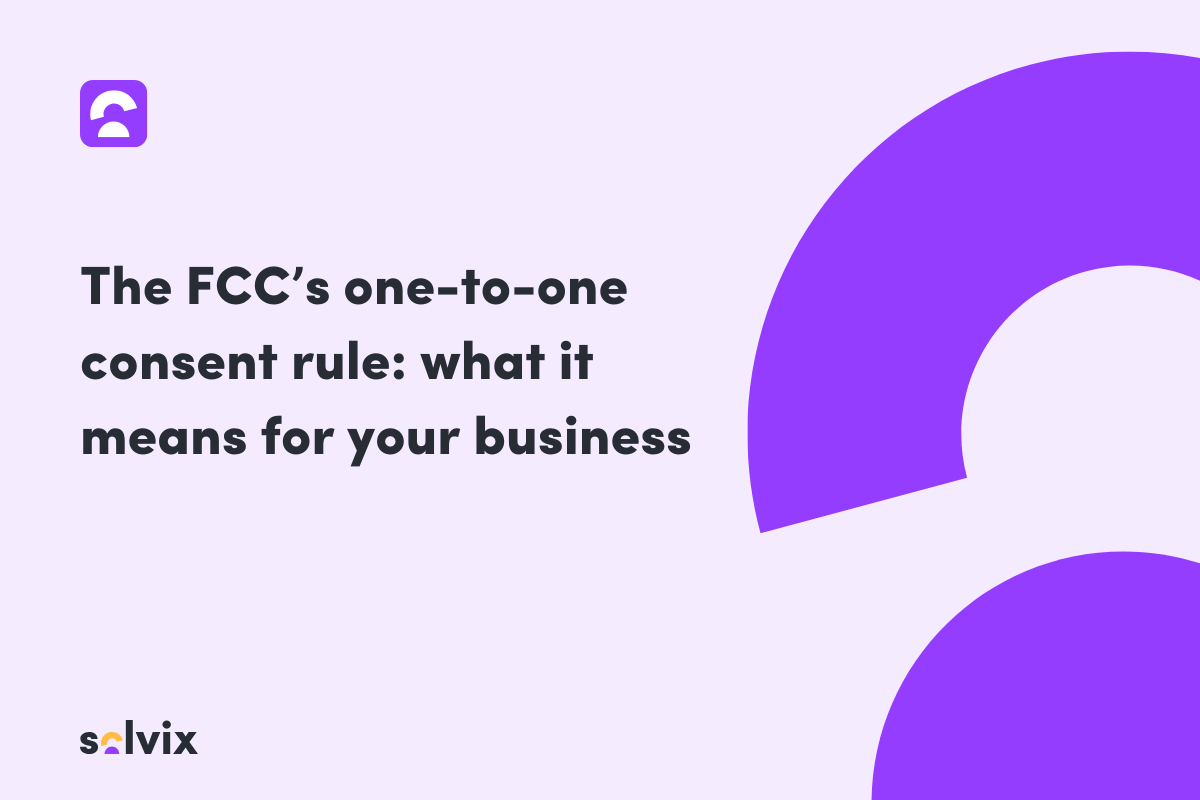Starting on January 27, 2025, the Federal Communications Commission (FCC) is rolling out new telemarketing rules, which you’ll want to pay attention to. These changes, called the one-to-one consent rule, mean that businesses must get explicit permission from individuals before sending telemarketing messages or robocalls.
What does this mean for you?
In short, it’s a shift toward putting consumers in control of who gets to contact them and why. For businesses, it’s not just about compliance; it’s a chance to rethink how you approach lead generation and customer outreach. Let’s dive into the details, what’s at stake, and how to stay ahead of the curve.
What is the one-to-one consent rule?
Telemarketing operated in a bit of a gray zone for a long time. Some businesses leaned on bundled consents gathered by third-party lead generators, allowing multiple companies to reach consumers using just one generic agreement. That approach? It’s no longer allowed. The new one-to-one consent rule introduces stricter standards. Here’s what’s changing:
- Businesses need direct consent: Each company must get permission directly from the consumer. Relying on another company’s consent or a shared agreement won’t fly anymore.
- Transparency is non-negotiable. Businesses must clearly state who they are and why they’re reaching out when asking for consent. There must be no vague explanations or fine print. Consent is company-specific. Consumers grant permission to one specific business at a time, not a list of companies they’ve never heard of.
These updates put individuals in charge of who can contact them while ensuring businesses take responsibility for their communication.
How businesses can prepare for the changes
1. Review how you collect consent
Start by taking a closer look at your current consent process. Are you relying on third-party lead generators or using vague, blanket permissions? If so, it’s time to rethink your approach. The new rules require consumers to actively agree to hear from you directly.
While you’re at it, check how clear and straightforward your consent language is. Does it tell people who you are and why you’re reaching out? If not, update your forms and messages to ensure they meet the new standard and leave no room for confusion.
2. Improve your consent process
Your consent process should be action-based and easy to follow. Forget about pre-checked boxes or hard-to-see fine print. Instead, focus on transparency and simplicity.
Consider using checkboxes or digital signatures that require consumers to take explicit, deliberate action. This doesn’t just meet compliance; it helps you build trust by showing you respect their choices.
3. Organize your records
The new rules require you to keep detailed records of consent, including when it was given, how, and by whom. These aren’t just for your files; they could be critical if regulators ask for proof.
Tools like a customer relationship management (CRM) system or a consent management platform can make this process easier. These systems help you track and organize permissions, reducing the risk of errors and ensuring you’re always prepared.
4. Get your team on board
Your team is crucial to staying compliant. Anyone contacting consumers must understand the new rules and how to follow them.
A quick training session can go a long way in keeping everyone aligned. Consistency across your team helps prevent mistakes and keeps your business on the right track.
What happens if you don’t comply?
Skipping these requirements isn’t just risky, it can be costly.
Non-compliance can lead to fines of up to $1,500 per violation, which adds up quickly if multiple infractions occur. There’s also the potential for lawsuits, including class actions, which can drain time and resources.
Beyond the legal risks, there’s the impact on your business’s reputation. Consumers today expect their privacy to be respected, and failing to do so can erode trust. Once that trust is gone, it’s hard to win back.
Why compliance is worth the effort
Yes, these changes require work. However, they also create an opportunity to stand out as a business that values transparency and respects its customers.
When people know they’ve chosen to hear from you, they’re more likely to engage with your messages. That means better conversations, stronger relationships, and more meaningful results.
By putting consumer privacy first, you’re not just meeting a legal obligation but showing your audience that you care. And that’s something they won’t forget.
Future thoughts
The FCC’s one-to-one consent rule marks a turning point for telemarketing. It’s a challenge but also a chance to raise the bar for how businesses communicate with their customers.
By revisiting your consent practices, improving your processes, and training your team, you can confidently meet these new standards. In doing so, you’ll build stronger, more trusting relationships with your audience.
If you’re unsure where to start, we’re here to help. Let’s make compliance straightforward and beneficial for your business.


